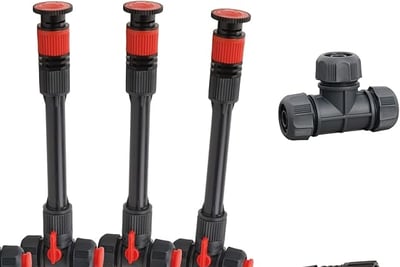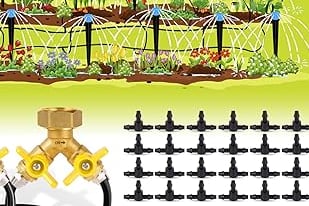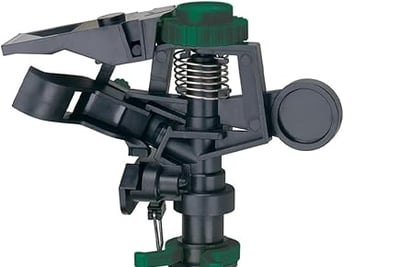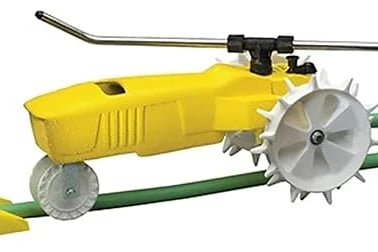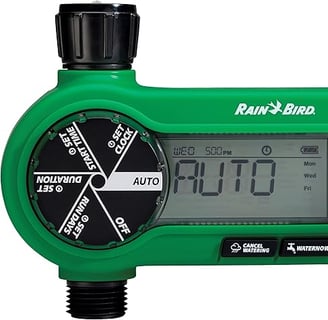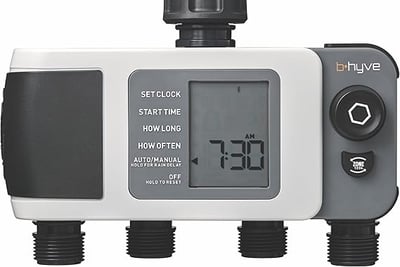Creating Your Own DIY Drip Irrigation System for a Thriving Garden
5 min read


Understanding Drip Irrigation: Basics and Benefits
Drip irrigation is a highly efficient watering technique that allows gardeners to provide water directly to the root zones of plants. This method utilizes a system of tubing, emitters, and connectors to deliver precise amounts of moisture, thereby ensuring that plants receive the necessary hydration without over-saturation. The tubing acts as the main artery of the system, carrying water from the source to the various parts of the garden. Emitters are strategically placed along the tubing and regulate the flow of water, ensuring that it permeates the soil slowly and subtly, while connectors allow for the integration of different components to create a customized irrigation layout.
The effectiveness of drip irrigation lies not only in its components but also in its myriad benefits. One of the most significant advantages is water conservation. By delivering water directly to the roots, this system minimizes evaporation and runoff, which are common issues faced in traditional watering methods. As a result, gardeners can use their water resources more efficiently, reducing overall consumption without sacrificing plant health.
Furthermore, the targeted delivery associated with drip irrigation plays a critical role in suppressing weed growth. Since water is provided directly to the plants and not the surrounding soil, there's less moisture available for weed seeds to germinate and thrive. This practice leads to healthier gardens with reduced competition for nutrients and water. Additionally, by maintaining consistent moisture levels around the root zone, drip irrigation fosters improved plant health and can significantly enhance yield. This targeted approach minimizes the risk of disease and promotes vigorous growth, making it an ideal choice for gardeners who prioritize efficiency and productivity.
Comparing Drip Irrigation to Traditional Sprinklers
When considering the best irrigation method for a garden, it is important to analyze the strengths and weaknesses of both drip irrigation systems and traditional sprinkler systems. Drip irrigation is known for delivering water directly to the base of plants through a network of tubing and emitters. This targeted approach results in minimal water waste and is particularly effective in preventing weed growth and disease, as water is applied directly to the soil rather than the foliage. Consequently, drip irrigation systems can promote healthier plant growth, especially in arid climates.
On the other hand, traditional sprinkler systems are recognized for their ease of setup and the broad coverage area they provide. Sprinklers can be installed quickly and can irrigate large garden spaces efficiently. They disperse water over a wide area, making them suitable for lawns and landscapes with varying plant types. However, this method often leads to water evaporation and runoff, which can result in wastage. In addition, watering the foliage rather than the root zone can inadvertently promote fungal diseases.
Another important consideration is the installation and maintenance of each system. Drip irrigation systems may initially be more complex to set up, as they require planning to ensure proper emitter placement and layout. Maintenance can be rigorous, as emitters may clog and need routine checking. Conversely, traditional sprinklers typically require less ongoing management; however, they can become inefficient if not monitored regularly for leaks or obstructions.
Ultimately, the choice between drip irrigation and traditional sprinklers depends on specific gardening goals and environmental conditions. Gardeners should weigh the benefits of water conservation and healthier plants with drip irrigation against the convenience and broader coverage offered by sprinklers. Each system carries its own pros and cons, making careful consideration crucial for effective garden management.
Selecting the Right Drip Irrigation Components for Your Garden
When embarking on the journey of creating your own DIY drip irrigation system, selecting the appropriate components becomes fundamental to its success. The choice of emitters, tubing, connectors, and filters can significantly influence both water efficiency and plant health. Understanding these components' specific attributes is essential to tailoring the irrigation system to your garden's unique needs.
First, consider the types of emitters available. Pressure-compensating emitters are particularly advantageous if your garden has irregular terrain or varying water pressure. These emitters deliver a consistent flow rate, even if water pressure fluctuates. In contrast, non-pressure-compensating emitters are simpler and often more cost-effective. However, they may not perform well in uneven landscapes, as their flow rate can vary based on pressure changes. When selecting emitters, ensure that their flow rates align with the water requirements of your plants, effectively promoting healthy growth.
The choice of tubing material is equally critical. PVC tubing is durable and withstands UV exposure, making it a popular choice for permanent installations. However, it may be less flexible and more challenging to manipulate around garden beds. Polyethylene tubing, on the other hand, offers flexibility and ease of installation, suitable for various garden configurations. Evaluate the layout of your garden, including plant types and spacing, to determine which material will best serve your needs.
Moreover, consider how to calculate your garden's water flow requirements. This involves assessing the overall area of your garden, soil type, and the water absorption capacity of the plants you wish to cultivate. Additionally, climate factors, such as local humidity and temperature, should influence your decisions. Understanding these elements will allow you to make informed choices regarding the components needed for an effective drip irrigation system tailored to your garden's specific needs.
Maintenance Tips and Troubleshooting for Your Drip Irrigation System
To maintain the effectiveness and longevity of your DIY drip irrigation system, regular inspections are crucial. Begin by conducting frequent checks on all components, including tubing, emitters, and connections. Look for any signs of wear or damage, such as cracks or leaks, which can compromise the overall efficiency. A thorough examination of your system allows you to catch potential issues early, thereby minimizing further problems down the line.
Cleaning the filters in your drip irrigation system is another essential maintenance step. Filters prevent debris and sediments from entering your system, which can lead to clogs. Depending on the water source quality, it is advisable to clean the filters weekly or bi-weekly. Simply remove the filter, rinse it with clean water, and ensure it is completely free from obstructions before reinstallation. This simple yet effective practice will help maintain optimal water flow and emitter performance.
It is also necessary to monitor water pressure within your drip irrigation system. Low water pressure may indicate blockages or leaks that need attention. If you notice that some areas of your garden are not receiving adequate water, inspect the emitters for clogs. These can often be resolved by soaking clogged emitters in vinegar or replacing them altogether if they are beyond repair. Additionally, ensure that your water source is providing the proper pressure; an inline pressure regulator can help manage fluctuations.
Regularly examining and adjusting your drip irrigation system will empower you to keep it functioning at peak performance. By being proactive about maintenance and addressing issues like clogs or leaks promptly, you can create a thriving garden that benefits from efficient irrigation throughout the growing season.


